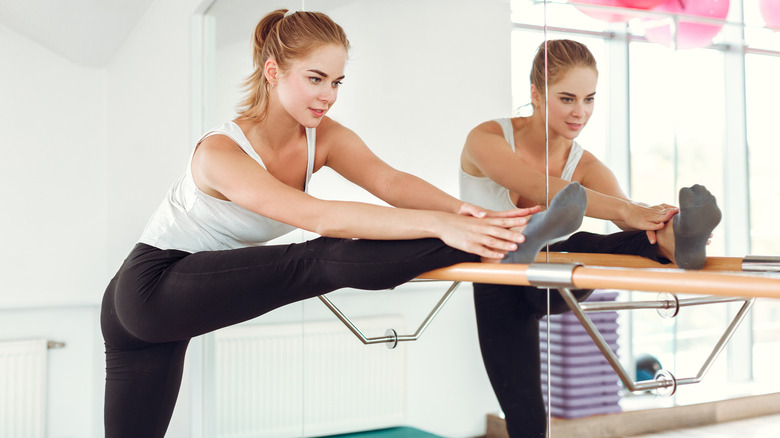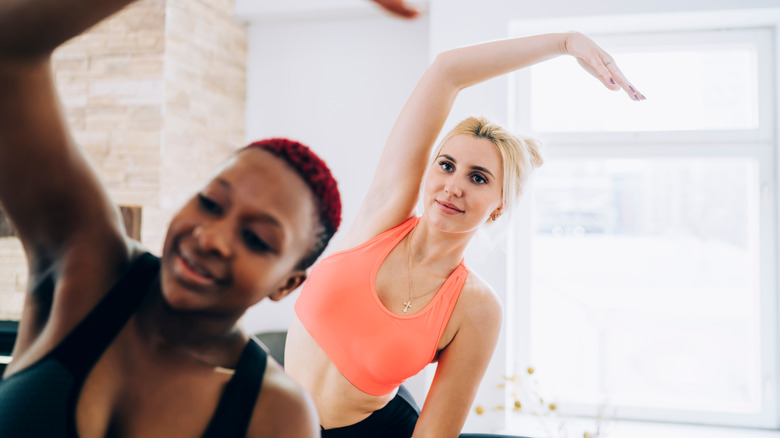Everything You Need To Know About Barre Classes
Barre classes are all the rage right now — and for good reason. Barre is a rigorous workout linked to a number of important health and fitness benefits. But what exactly is it? According to Women's Health, barre is a ballet-inspired workout program that combines dance, pilates, and yoga. Barre workouts primarily focus on cardio, stretching, and weight training and aim to tone and target your muscles through a variety of low-impact, high-intensity movements.
While some classes will only require the use of the ballet barre, others will also incorporate other types of workout equipment, including free weights, exercise balls, and resistance bands. Since barre is a full-body workout, it is designed to work all of your muscle groups, increasing strength and endurance. "The muscles in each group are fatigued via small targeted movements, high numbers of repetitions, and light weight or resistance," Katelyn DiGiorgio, the VP of training and technique at Pure Barre, told Women's Health.
The benefits of barre classes
As a result, barre workouts are associated with a variety of fitness benefits. For instance, barre classes have been proven to improve posture, according to Byrdie. A 2020 study published in the Journal of The Korean Society of Integrative Medicine found that taking two 50-minute barre classes every week for three months improved participants' head, shoulder, and pelvic postures. Barre workouts can also help tone your abdominal muscles. Since barre classes focus on balance and strength, they force you to properly align your body, which can help tighten your core.
Furthermore, barre classes can help strengthen your glutes. Although they're designed to strengthen every muscle in your body, barre workouts specifically target the glutes, which can lead to other important benefits. "More importantly, working on your glutes helps to strengthen all the muscles that stabilize the pelvis," Leah Willoughby, an instructor and personal trainer at Ten Health & Fitness, told Byrdie. "This helps to alleviate pressure on the back, hips, and knees."


